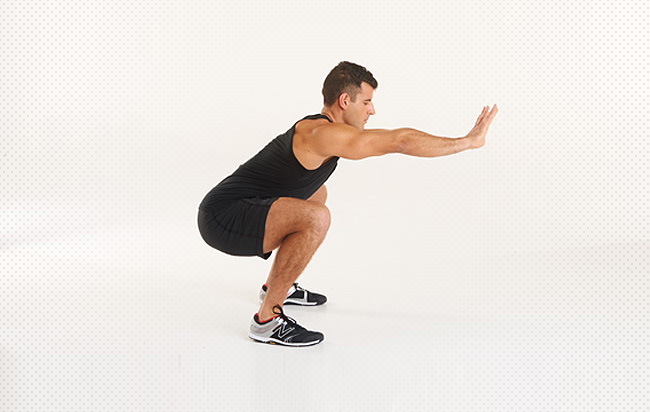We’re excited to share our first three-part series on the blog! There are so many seemingly simple, yet quite complex, our amazing bodies can do. Our team will dive into repetitive motions that you’re doing on the daily to share the why and the how so you can move in a biomechanically sound manner and strengthen your body.
Our first series, the Anatomy of the Squat, is courtesy of Bram van Bommel, our resident Registered Massage Therapist. Check out his first post on the blog!
Part 1 – Why the squat is an important functional screening test
One of the most popular moves to target the lower-body with is the squat. This exercise demonstrates several complex movements that are needed for everyday life, making the movement an important functional tool in the clinician’s assessment.
The squat looks at the ankle, knee, and hip joints primarily. When we walk we must take a step forward putting our hip and knee into flexion and our ankle must dorsiflex (pointing our toes up). When pushing off that same leg to propel ourselves forward we must extend the hip and knee and plantar flex our ankle (pointing toes away).
During a squat we must do these movements, on the way down we are doing the step forward (flexion of hip and knee and dorsiflexion of ankle) and on our way up we are pushing off (hip and knee extend and ankle plantar flexion) but in a more complex manner with greater ranges of motion compared to when we walk.
It’s important to check the range of motion of each individual joint separately because sometimes more than one joint is effected, this unique functional screen provides us with the knowledge of seeing how these joints work together and if and where the dysfunction is presenting itself.
With a lack of range of motion in one or more of these joints this puts excessive pressure on our other joints creating pain. One of the most common injuries we see is low-back pain. In my experience, low-back pain is merely a symptom of muscle misuse and compensation. The true cause of this discomfort is actually coming from the hips. This is due to the fact that our hips are lacking smooth motion causing our back to work harder and in turn overuse the back muscles causing pain and soreness.
Whether you’re visiting us at the clinic, or working out with your trainer at the gym, keep in mind that every individual’s body is different and to ensure biomechanically sound movement, have a professional analyze your basic squat from a variety of angles in order to avoid injury to any of the sensitive joints performing the movement.
In the next installment of the series, we’ll get into the mechanics of how the hips roll in a squat!
Optimal athletic performance drives Registered Massage Therapist Bram van Bommel to work with athletes of all levels to recognize their strengths and weaknesses to pursue programs that proactively prevent sports-related injuries.


